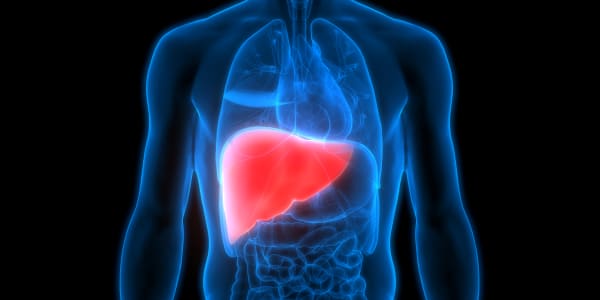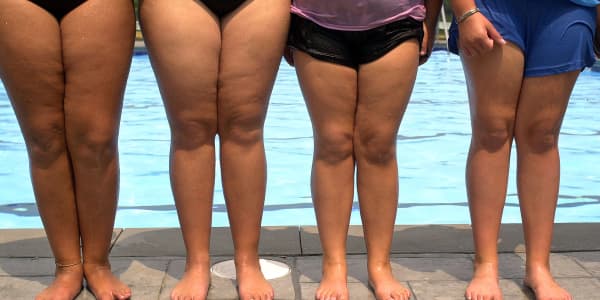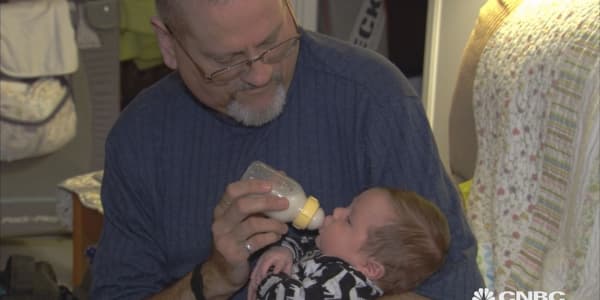Video games, in general, don't do much for your waistline. While there was a brief surge of interest in exercise-themed titles in 2009–2010, the fad fizzled — and players happily returned to their couches, controllers in hand.
The rise of virtual reality could alter that slightly, as many of today's games keep you moving and sometimes work up a good sweat. But Atkins Nutritionals, a company founded by Dr. Robert Atkins that promotes low-carbohydrate foods, is looking at the health benefits of VR through a different set of lenses. The company, at CES earlier this month, debuted a virtual reality game it hopes will help children (and adults) learn to make smarter choices when choosing what to eat.
"This is the first generation that's going to have a shorter lifespan than their parents because of obesity," says Colette Heimowitz, vice president of nutrition and education at Atkins Nutritionals. "If we can get them young and educate them about better choices, that might help."
The game's called "Sugar Goggles" — and let's be very clear up front: It's not going to win any best of 2017 awards for its game play. Players don a VR headset (demos were given on HTC's Vive) and navigate their way through gold rings inside of what appears to be a human vein. (A disembodied set of hands moving with the VR system's controllers helps them target the rings.)
After each ring, you encounter two plates with different foods. For instance, a banana and a whole-wheat bagel. Fly through the one that has the lowest impact on your blood sugar and you'll get an in-game energy burst. Choose poorly and you're told you've had a blood sugar spike and will be temporarily thrown off course.
Think of it as the gamification of "Eat This, Not That."
More from Modern Medicine:
10 cool apps to help keep you fit and healthy
These new tech devices are the new painkillers
Why America is losing the battle against its No. 1 killer disease
It's a short game, it doesn't fully take advantage of what VR is capable of, and it's graphically clunky, but it does have its heart in the right place and it's the first virtual reality attempt to help educate people about the impacts of certain foods and, ideally, help them retrain their eating habits. A pair of 2016 reports from the Centers for Disease Control and Prevention showed 38 percent of U.S. adults are obese, while 17 percent of teenagers fit that classification.
"Normally, you would assume a low-carbohydrate diet would have a good effect, but people think they have to cut out all carbohydrates," says Heimowitz. "Based on the glycemic load index, where they actually test the food and test the impact on blood sugar, we developed this game to educate people on the impact carbohydrates have on blood sugar."
The mission of "Sugar Goggles" isn't necessarily weight control, claims Atkins. Instead, it's meant as an educational tool that could prevent people from losing the battle of the bulge.
We developed this game to educate people on the impact carbohydrates have on blood sugar.Colette Heimowitzvice president of nutrition and education, Atkins Nutritionals
"If you regulate your blood sugar, you'll burn more fat," says Heimowitz. "If there's less blood sugar around, the body will resort to its backup fuel system, which is fat burning. So yeah, if you can control your blood sugar, you can lose weight — as well as have healthy heart benefits, control diabetes and have more energy."
With the CES debut of "Sugar Goggles" behind it, the company says it next plans to bring it to classrooms in the coming months to help kids make smart decisions earlier.
That could cause a few hurdles for the company, depending on the age range they target. Most VR headsets recommend users be 13 or older. Because the technology is so new, though, there haven't been any academic studies investigating the effects of VR on children's eyes. (Atkins says it doesn't expect that to be an issue since it is working with HealthCorps and plans to target high school students.)
One thing is clear: As of now, says Heimowitz, there are no plans to release "Sugar Goggles" publicly via Steam or other PC digital distribution services that would make it available to the public at large.
It's very much a first-generation effort, but Atkins says to expect future versions if it's embraced by kids.
Using virtual reality to adjust eating habits and lose very real pounds might sound odd, but there is some scientific evidence showing a possible correlation between the two.
The University of Tokyo's Dr. Takuji Narumi last year unveiled a VR system called "Augmented Satiety," which virtually increased the size of a food item people would consume in the real world. Using that, he found people would reduce their food intake by up to 10 percent, as their brain was tricked into believing they were eating more than they actually were.
— By Chris Morris, special to CNBC.com




